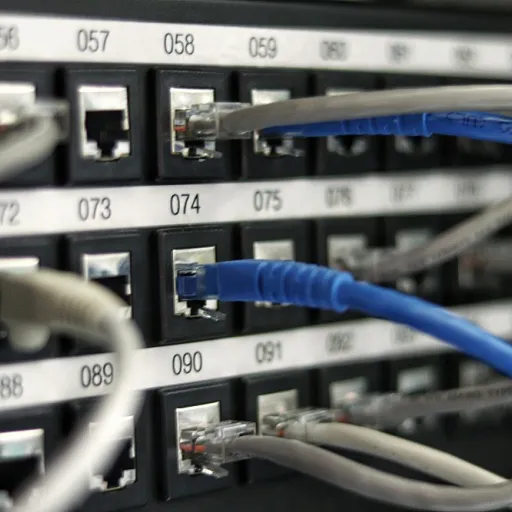
What is prometheus architecture and why does it matter?
Why Prometheus is Changing the Way We Monitor Software
Prometheus architecture is at the core of a major shift in how modern software systems are monitored. As an open source monitoring system, Prometheus is designed to collect, store, and query metrics in real time. Its architecture is built around the concept of time series data, which means it records how metrics change over time, giving teams a detailed view of their applications and infrastructure.
What sets Prometheus apart is its focus on reliability and scalability. Instead of relying on a single central server, Prometheus servers can be deployed across different environments, each scraping metrics from various targets. These targets can be anything from a Kubernetes cluster, a node exporter, or a custom service exposing metrics Prometheus can understand. The system uses service discovery to automatically find and monitor new targets as they appear, making it ideal for dynamic, cloud native environments.
Prometheus stores its time series data locally, but it also supports remote storage integrations for long term storage needs. This flexibility allows organizations to keep historical data prometheus collects for as long as required, supporting deep analysis and compliance requirements. The architecture also enables powerful queries, letting teams slice and dice their metrics to uncover trends, spot anomalies, and react quickly to incidents.
Understanding how Prometheus architecture works is crucial for anyone interested in the future of software monitoring. Its approach to metrics, data collection, and storage is influencing the design of new monitoring systems and shaping best practices across the industry. For a broader perspective on how evolving data models impact software, you can explore the evolution of Spanner timestamp types and its relevance to time series databases.
Key components of prometheus architecture
Core building blocks of the Prometheus system
Prometheus architecture is defined by a set of core components that work together to collect, store, and query metrics. Understanding these building blocks is essential for anyone looking to implement or scale a monitoring system using Prometheus, especially as organizations move toward cloud native environments and larger clusters.
- Prometheus server: The heart of the system, the Prometheus server is responsible for scraping metrics from configured targets at specified intervals. It stores this data as time series, indexed by metric name and key-value pairs called labels.
- Targets and service discovery: Prometheus can monitor a wide range of targets, from application services to infrastructure nodes. Service discovery mechanisms, including integrations with Kubernetes clusters, allow the system to dynamically find and update the list of endpoints to scrape.
- Client libraries: These libraries are embedded in application code to expose custom metrics in a format that Prometheus can scrape. They support multiple programming languages, making it easier to instrument diverse services.
- Node exporter and exporters: Exporters are agents that collect metrics from third-party systems or hardware. The node exporter, for example, gathers host-level metrics such as CPU, memory, and disk usage, providing critical insights into system health.
- Time series database and storage: Prometheus stores all scraped data in a local time series database. While this is efficient for short- to medium-term storage, integrations with remote storage solutions enable long term retention and analysis of metrics prometheus collects.
- Query language (PromQL): Prometheus features a powerful query language for extracting and aggregating time series data. This enables users to create dashboards, set up alerts, and analyze trends over time.
- Alertmanager: This component handles alerts generated by the Prometheus server, routing notifications to email, chat, or incident management platforms based on user-defined rules.
- Prometheus configuration: All aspects of the monitoring system, from scrape intervals to target definitions, are managed through a flexible configuration file. This allows for precise control and automation at scale.
How these components shape monitoring in modern environments
The modular design of Prometheus architecture allows organizations to adapt their monitoring system to a variety of use cases, from single-node setups to large, distributed cloud native deployments. The open source nature of Prometheus and its vibrant ecosystem of exporters and integrations make it a popular choice for teams seeking transparency and flexibility.
For those interested in how these architectural choices impact cloud-based business models, you can explore more in this in-depth look at cloud resell networks.
As we move forward, the interplay between these components and the challenges of scalability and reliability will continue to shape best practices in software monitoring.
Prometheus in cloud-native environments
Prometheus and the Cloud Native Landscape
Prometheus has become a cornerstone in cloud native environments, especially as organizations shift towards microservices, containers, and dynamic infrastructure. Its open source nature and robust metrics collection make it a natural fit for orchestrated platforms like Kubernetes. The ability to automatically discover targets using service discovery mechanisms allows Prometheus to adapt to the ever-changing topology of a cloud native cluster.
How Prometheus Integrates with Kubernetes
In Kubernetes clusters, Prometheus leverages service discovery to dynamically find and scrape metrics from pods, nodes, and services. This reduces manual configuration and ensures that the monitoring system keeps pace with scaling and ephemeral workloads. The node exporter and other client libraries expose metrics in a format that Prometheus servers can easily collect, storing time series data efficiently in its local storage.
- Service discovery: Prometheus automatically detects new targets as containers spin up or down.
- Flexible configuration: The Prometheus configuration file allows for custom scrape intervals and target selection, adapting to different workloads.
- Scalable data collection: Multiple Prometheus servers can operate in parallel, each scraping metrics from different parts of the cluster.
Managing Metrics and Storage in Dynamic Environments
As cloud native systems generate vast amounts of metrics, managing storage becomes critical. Prometheus stores time series data locally, but for long term retention or large-scale environments, remote storage integrations are often used. This allows organizations to offload older or less frequently accessed data to external systems, ensuring that the monitoring system remains performant.
Prometheus metrics are queried using a powerful query language, enabling teams to analyze trends, detect anomalies, and trigger alerts in real time. The combination of flexible data collection, efficient storage, and advanced querying makes Prometheus architecture well-suited for the demands of modern cloud native applications.
For a practical look at how cloud native monitoring is transforming industries, check out this article on AI-powered self-checkout with item highlighting.
Scalability and reliability challenges
Scaling Metrics Collection Across Modern Infrastructures
As organizations adopt cloud native technologies and expand their infrastructures, the scalability and reliability of monitoring systems like Prometheus become central concerns. Prometheus architecture is designed to scrape metrics from multiple targets, but as the number of targets and the volume of time series data grow, several challenges emerge.
- Scraping at Scale: The Prometheus server regularly scrapes metrics from a wide range of endpoints, including Kubernetes clusters, node exporter agents, and custom services. As the number of targets increases, the server must handle more concurrent requests and process more data, which can strain CPU, memory, and network resources.
- Storage Limitations: Prometheus uses a local time series database for storing metrics. While efficient for short to medium term storage, this approach can struggle with long term retention or high cardinality series data. Organizations often need to integrate remote storage solutions to manage historical data prometheus collects over time.
- Reliability in Distributed Environments: In large deployments, a single Prometheus server may not be sufficient. Running multiple prometheus servers can help distribute the load, but introduces complexity in prometheus configuration, data deduplication, and query federation across clusters.
- Service Discovery and Dynamic Targets: Cloud native environments are dynamic, with services and nodes frequently scaling up or down. Prometheus relies on service discovery mechanisms to automatically update its list of targets, but rapid changes can lead to missed metrics or increased scrape errors if not properly managed.
Ensuring Data Integrity and Availability
Maintaining the integrity and availability of metrics prometheus collects is critical for reliable monitoring. Failures in scraping, storage, or query execution can lead to gaps in observability, impacting incident response and system health analysis. To address these risks, teams often:
- Implement redundancy by running multiple prometheus servers with overlapping scrape configurations.
- Leverage remote storage backends for long term storage and backup of time series data.
- Use client libraries and exporters to ensure consistent metrics formatting and availability across diverse services.
These strategies help organizations build a resilient monitoring system that can adapt to the demands of modern, distributed infrastructures, ensuring that the prometheus architecture continues to deliver value as environments evolve.
Evolving best practices for prometheus implementation
Continuous improvement in configuration and discovery
Prometheus architecture has seen a shift towards more dynamic and automated approaches for configuration and service discovery. Instead of relying solely on static files to define targets, teams are adopting integrations with orchestration platforms like Kubernetes. This enables the monitoring system to automatically discover new targets as services scale or change, reducing manual overhead and improving accuracy in metrics collection.Optimizing storage for long term metrics retention
As organizations collect more time series data, the need for efficient storage prometheus solutions becomes critical. Best practices now recommend leveraging remote storage integrations for long term retention of metrics prometheus data. By connecting the prometheus server to external series databases, teams can offload older data while keeping recent metrics readily accessible for queries. This approach balances performance and cost, especially in large cluster environments.Enhancing reliability with federation and redundancy
To address reliability challenges, it's become common to deploy multiple prometheus servers in a federated setup. This allows for aggregation of metrics from different clusters or regions, ensuring that the monitoring system remains robust even if a single server fails. Redundancy in scraping and storing time series data helps maintain visibility into system health and performance at all times.Leveraging client libraries and exporters for richer insights
The use of client libraries and exporters like node exporter has expanded, enabling teams to collect custom metrics from their applications and infrastructure. By instrumenting code and exposing prometheus metrics endpoints, organizations gain deeper visibility into their systems. This practice supports proactive monitoring and faster troubleshooting, as the data prometheus collects is tailored to each service or target.Security and access control considerations
With the growing adoption of prometheus in cloud native environments, securing the monitoring system is a top priority. Best practices now include restricting access to the prometheus server, encrypting data in transit, and carefully managing prometheus configuration files. These steps help protect sensitive metrics and ensure compliance with organizational policies.- Automated service discovery for dynamic environments
- Remote storage for scalable, long term retention
- Federation and redundancy to boost reliability
- Custom metrics via client libraries and exporters
- Enhanced security for metrics and configuration
By following these evolving best practices, teams can maximize the value of prometheus architecture and ensure their monitoring system scales with their needs.















